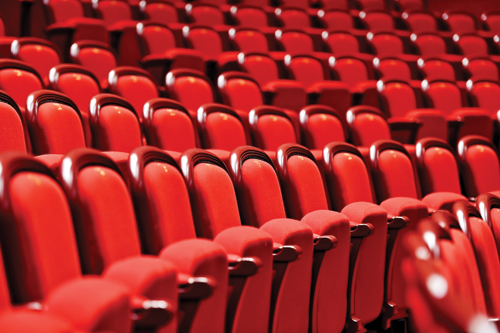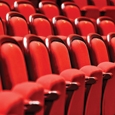
Reports of orchestras declaring bankruptcy, schools cutting funding for music programs, and waning support for classical music from youthful audiences are all too common. Is interest in classical music dying? Well, not necessarily. In fact, many orchestras and organizations are thriving due to innovative programming and marketing strategies. To be successful, musicians should stay current with shifting cultural tastes and consumer behavior.
Performers are often consumed with their own virtuosic display of technique and musicianship and spend far less time considering the audience. Who is in the audience? What drove them to attend the concert? Conversely, who is not in the audience? What are the barriers that prevented that group from attending the concert? These questions are important but rarely addressed in a student’s education. Taking a look at what motivates young adults to attend a concert and understanding what prevents them from doing so, will help performers better understand how to diversify and strengthen audience attendance.
A few years ago, I was struck by a comment uttered by a colleague prior to a concert. We were warming up on stage and watching people from the community entering the doors to the hall. My friend leaned toward me and softly referred to the people filing into their seats as Muggles – people without magical skills in the Harry Potter world. In the moment I laughed, but on my drive home I became increasingly disheartened by the use of the word Muggles to describe audience members who were supporting classical music. This was a moment of awakening for me and spurred my interest in the audience’s perspective and how I could share the magic with them.
Create Reasons to Attend
Research conducted by Hopkins Center for the Arts at Dartmouth and the National Endowment for the Art’s (NEA) 2015 Survey of Public Participation in the Arts, was used to identify strategies designed to attract a more diverse, less classically trained audience. According to the survey, the primary motivation to attend concerts in the arts among Americans is to socialize with friends or family. This implies that performers should look for ways to incorporate an aspect of socializing without compromising artistry.
Social fulfillment involves making people feel connected and part of a group. This can occur in multiple ways. Allotting more time and resources to the social events that surround a performance is a place to start. A pre-concert setting that allows the concert attendees to meet each other can also serve as an educational window. Receptions after performances allow time for groups to debrief, discuss thoughts about the concert and meet others in the audience. Food and drink are usually a good addition.
During the concert, consider seating configurations that allow for conversation between pieces or sets. Instead of a dark concert hall, try brighter lighting that allows audience members to read accompanying materials. It also can help performers gauge the atmosphere in the audience. Young adults tend to enjoy time to connect with each other. Incorporating these opportunities before, during, or after concerts may draw a new demographic of audience members.
Consider Time
Conversely, in the same survey, the primary barrier for Americans attending a concert or performance is a lack of time. Typically, a recital is ninety minutes long with a ten to fifteen minute intermission. An hour and a half of sitting quietly in a darkened room may seem daunting. Consider programming three different thirty-minute concerts or some other alternative. Another option is to offer less formal concerts in unconventional spaces. Classical Revolution is a chamber music organization that performs in unconventional, informal settings. The musicians bring the music to the people instead of the people coming to hear the music. Founded in 2006 by violist Charith Premawardhana, Classical Revolution’s mission is to enrich communities with chamber music and to create a support network for local musicians. Since 2006 over thirty chapters have been created across the United States, Canada, and Europe.
Starting in 2010, the New World Symphony, an orchestral academy that prepares young professionals for careers in symphony orchestras, began experimenting with four different concert formats in an effort to appeal to younger, less experienced audience members. The most effective format for attracting first-time attenders was the Mini-Concert. The abbreviated concerts were thirty minutes long and cost $2.50 to attend. With conductors or musicians providing spoken introductions, these short concerts had the greatest impact on increasing attendance among those who had not previously attended classical concerts.
Get the Audience Involved
Involving the audience so that they are active participants rather than bystanders is another important aspect of attracting a broader audience base. Some situations might allow for a call and response activity during a performance. Recently, I visited an elementary school and gave students a thirty-second tutorial on beatboxing. While they gave me a beat with their collective, “Boots-and-Cats” I acknowledged a young boy’s birthday with a rousing rendition of Happy Birthday. It was a huge success and enjoyed by all.
Obviously, performances are not always in a gymnasium filled with fifty sixth graders, but there are usually ways to adapt a presentation to the audience. Perhaps consider bringing the audience onstage with the performers or vice versa. Expanding the stage to the entire hall has acoustical benefits as well as theatrical benefits, and audience members become immersed in the music experience. In a small setting, it can be very effective to ask questions of the audience before and after introducing a piece of music.
To engage audience members, performers should develop additional skills. Offering a smile and a bow before and after each piece is not enough. Performers are educators who introduce and explain new and differing styles of music, orators who challenge listeners to develop their own accompanying videos, storytellers who tell the tales of other cultures and previous times, and vocal advocates of classical music who invite others to understand and appreciate its breathtaking beauty. Talk about what the audience should listen for in the music. Explain why you programmed the music you are about to perform. Think about how you can make the music and the context in which it was written feel tangible and exciting.
Practice Presentation Skills
Instrumentalists may be uncomfortable or unfamiliar with verbal presentations. Practice this aspect of the performance with the same fervor that you approach the delivery of a musical phrase. Make sure your voice projects well and that you are using clear and deliberate articulation so that every word is heard in the back of the hall. I usually find that this verbal connection helps me as well. I see faces that are engaged and am reminded that the performance is not about me. It is about sharing the music with the audience.
Unless you are performing for an audience completely filled with musicians, there will be people experiencing the recital from many different perspectives and levels of musical knowledge. I come from a family of non-musicians. They have helped me to understand the variety of ways people experience classical music. Often, I find myself generating analogies for my brothers in order to draw parallels between my vocation and theirs. For example, I might say to my ophthalmologist brother, “This piece is like a routine cataract surgery. It is a staple in our repertoire because of how well it was written for the flute.” This type of analogy can create an entry point into the musical language and repertoire for a non-musician.
Add Other Elements
Another way to do this is to align music with dance, visual art, and spoken word. This not only gives audience members new ways to experience the music, but also gives performers the chance to work with other artists. Collaborations with other types of artists forces us to stretch beyond the comfortable musical jargon. Finding a common language, one that is understood across disciplines, to explain the inner workings of the musical language is a great exercise in expanding our capacity to interpret music.
The following questions offer some ideas for incorporating other art forms into a flute recital:
• What other forms of art were produced during the same time and place as the music? Are there similarities? Consider including images or projecting the art during the performance.
• What poetry best depicts the musical affect of the piece?
• Are there short stories or other written accounts that help to immerse the listener into the context in which the piece was written?
• Are there any significant musical connotations in the music? How might you depict those with words, movement or imagery?
• Was the piece inspired by a person, place or object? How might you incorporate that into the performance?
• How might the music be reflected in movement?
• Is the music connected to a style of dance?
Plan Your Next Performance
Consider the following for your next recital or concert. Start with a targeted audience before choosing repertoire. Think about why this group of people might come to see your performance. Perhaps the theme of the concert resonates with a particular age demographic, or the location of the performance space is convenient for a certain neighborhood. Don’t limit yourself to recital halls. Consider unconventional spaces to hold your concert. Private homes, art galleries, backyards, bookstores, hospitals, country clubs, retirement homes, libraries, wineries, restaurants, and radio stations are possible examples.
Take great care in programming. Start with a theme and try to create a thread throughout the program. It might involve particular composers, time periods, instrumentation or historic events. Opposites can also provide a theme. For instance, when I program Debussy’s Syrinx, I like to perform Edgard Varese’s Density 21.5 immediately following to provide contrast. It helps to incorporate a difference in lighting and stage placement; Debussy on the left and Varese on the right. Whatever thread you have established, consider the many ways of illuminating the topic. Finally, talk about your ideas with others outside your field and get their thoughts and suggestions. Maybe they can provide you with an idea of how it connects to a topic in their field.
Going forward, musicians need to be inclusive. The audience and their experience should be a priority. Excellence and mastery of the instrument are necessary but are only part of the equation. Experiences that are multisensory and provide increased interaction will help bring younger and more diverse audiences to performances.






